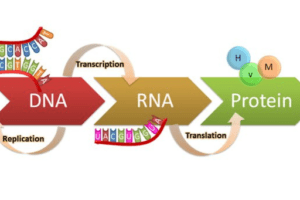Somatic yoga focuses on mindful movements and internal body awareness. It helps improve flexibility, reduce stress, and promote overall well-being.
Discover that somatic yoga is all about connecting deeply with your body. Through gentle movements and mindful awareness, it helps release tension and improve flexibility. Whether you’re new to yoga or seeking a new approach, somatic yoga offers a pathway to inner peace and physical harmony.
Somatic yoga is a gentle practice that focuses on internal body awareness and mindful movement. It helps release muscular tension and improve flexibility through slow, deliberate exercises. This approach encourages deep relaxation and stress reduction, making it beneficial for overall well-being. Somatic yoga can be adapted to suit various fitness levels and is suitable for anyone looking to reconnect with their body. This article delves into the essence of somatic yoga, its principles, and the wide-ranging benefits it offers to practitioners.
What is Somatic Yoga?
Somatic yoga is a transformative practice that focuses on connecting deeply with your body through mindful movement and awareness. Somatic yoga emphasizes the mind-body connection, promoting relaxation and stress reduction through mindful movement. By cultivating a deeper understanding of how their bodies move and feel, practitioners can develop greater self-awareness and a sense of inner harmony.
Somatic yoga is suitable for individuals of all fitness levels and can be adapted to meet the unique needs and abilities of each practitioner, making it a versatile and beneficial practice for anyone seeking to reconnect with their body and promote holistic well-being.
What are the benefits of somatic yoga?

1. Body Awareness
One of the primary benefits of somatic yoga is its ability to enhance body awareness. Through gentle, mindful movements and exercises, practitioners learn to tune into their body’s signals, noticing areas of tension or imbalance. This heightened awareness can lead to better posture, improved alignment, and a reduced risk of injury in daily activities.
2. Stress Reduction
Somatic yoga incorporates elements of mindfulness and relaxation techniques, making it an effective tool for stress reduction. By focusing on the present moment and cultivating a deep sense of relaxation, practitioners can lower cortisol levels and activate the body’s parasympathetic nervous system, promoting overall calmness and well-being.
3. Improved Flexibility and Range of Motion
Unlike more rigorous forms of yoga that may emphasize external alignment and flexibility, somatic yoga encourages gradual, gentle movements that respect the body’s natural limits. This approach helps improve flexibility and range of motion without strain or force, allowing muscles to lengthen and joints to move more freely over time.
4. Pain Management
Many people turn to somatic yoga as a therapeutic practice for managing chronic pain, such as lower back pain, neck tension, or joint stiffness. By releasing muscular tension and promoting relaxation, somatic yoga can alleviate pain symptoms and improve overall physical comfort. It teaches practitioners to move in ways that are gentle and pain-free, fostering a more sustainable relationship with their bodies.
5. Mind-Body Connection
Central to somatic yoga is the concept of the mind-body connection—understanding how thoughts, emotions, and physical sensations are interconnected. Through mindful movement and breath awareness, practitioners can develop a deeper understanding of their body’s responses and cultivate greater emotional resilience and self-awareness.
6. Rehabilitation and Injury Prevention
Somatic yoga techniques are increasingly used in rehabilitation settings to help individuals recover from injuries or surgeries. The gentle, controlled movements promote healing by increasing circulation, restoring mobility, and reducing stiffness. Moreover, somatic yoga can be a valuable tool for preventing future injuries by improving balance, coordination, and proprioception.
7. Mental Clarity and Focus
Regular practice of somatic yoga can enhance mental clarity and improve focus by calming the mind and reducing mental chatter. The emphasis on mindful awareness and present-moment experience can help practitioners develop concentration skills that are beneficial both on and off the yoga mat.
8. Holistic Well-being
Ultimately, somatic yoga promotes holistic well-being by integrating physical, mental, and emotional aspects of health. It encourages self-care and self-compassion, fostering a positive relationship with one’s body and mind. Practitioners often report feeling more balanced, grounded, and resilient as they incorporate somatic principles into their daily lives.
Read Also: Why is Yoga a Sin?
How do I make my yoga practice a “somatic” practice?
In a typical somatic yoga session, the instructor guides participants through a series of slow, deliberate movements designed to awaken sensory awareness and release muscular tension. These movements may be performed lying down, seated, or standing, with a focus on breath awareness and gentle exploration of bodily sensations.
- Breathe Mindfully: Maintain a slow, steady breath through your nose when possible. This helps to cultivate relaxation and focus during your practice.
- Move with awareness: Perform movements slowly and consciously. Pay attention to the sensations involved in initiating and sustaining each movement or yoga pose.
- Reduce Unnecessary Effort: Move gently and minimize unnecessary tension, especially in areas like your face, shoulders, and hands. Notice and release hidden tensions as you practice.
- Avoid pain: Somatic yoga should not cause pain. Avoid forcing any movements or poses that cause discomfort. Instead, explore positions that feel comfortable and sustainable for your body.
- Practice Patience and Positivity: Approach your practice with persistence, patience, and a positive mindset. Understand that change takes time and allow yourself to explore and appreciate your body’s abilities with gratitude and compassion.
By integrating these principles into your somatic yoga practice, you can foster a deeper connection with your body, promote relaxation, and support overall well-being effectively over time.
What is Somatic Yoga Therapy?
Somatic yoga therapy is a deeply personalized approach to healing and self-discovery. Unlike traditional yoga classes that often focus on external appearances, somatic yoga therapy delves into the internal landscape of the body and mind.
This therapeutic practice involves slow, gentle movements tailored to each person’s comfort and needs. It’s not about achieving advanced poses but rather about moving in ways that feel natural and nurturing. By doing so, practitioners can address physical discomfort rooted in stress or habitual patterns, while also benefiting their mental well-being.
Beyond its physical benefits, somatic yoga therapy offers profound psychological support. Through mindful movement and breathwork, it helps release stored emotions and tensions. This holistic approach fosters a harmonious relationship between body and mind, promoting overall health and emotional resilience.
In essence, somatic yoga therapy is a journey inward—a practice that invites individuals to connect deeply with themselves, find peace from within, and cultivate a profound sense of well-being, both physically and emotionally. It’s about embracing your body’s wisdom, moving with intention, and nurturing a compassionate dialogue between mind and body.
Read Also: One-Person Yoga Poses: Transform Your Yoga Practice
Conclusion
In conclusion, the benefits of somatic yoga are profound and wide-reaching. By emphasizing internal awareness and mindful movement, somatic yoga helps practitioners develop a deeper connection with their bodies. This heightened awareness not only improves flexibility and reduces muscular tension but also enhances overall physical comfort and well-being.
Furthermore, somatic yoga is a valuable tool for stress reduction and relaxation. Through its gentle approach and focus on breath awareness, it promotes a sense of calmness and helps activate the body’s natural relaxation response. This practice can also aid in pain management by encouraging gentle movements that alleviate tension and improve posture. Overall, somatic yoga offers a holistic pathway to health, combining physical benefits with emotional and mental benefits. well-being, making it a beneficial practice for anyone looking to enhance their quality of life through mindful movement and self-awareness.
Somatic Yoga FAQ’s
What are the main benefits of somatic yoga?
Somatic yoga enhances body awareness, reduces stress, improves flexibility, supports pain management, and promotes overall well-being through mindful movement.
Is somatic yoga suitable for beginners?
Yes, somatic yoga can be adapted for all levels. It focuses on gentle, slow movements and encourages participants to listen to their bodies.
How does somatic yoga differ from traditional yoga?
Traditional yoga often emphasizes external alignment and achieving poses. Somatic yoga prioritizes internal awareness, mindful movement, and releasing tension.
Can somatic yoga help with stress relief?
Yes, somatic yoga incorporates relaxation techniques and breath awareness, promoting a calm state of mind and reducing stress levels.
What are the emotional benefits of somatic yoga?
Somatic yoga supports emotional resilience by helping practitioners release stored emotions and foster a deeper mind-body connection, leading to improved mental clarity and well-being.







